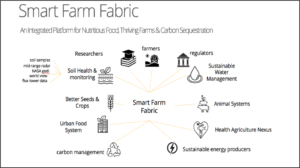In 1992 the United Nations came together for its first-ever, “Earth Summit,” and began to acknowledge the requisite issue of climate change at a global level.
Since then, sustainability has become a household term, and for good reason. Since the industrial revolution, it is evident humanity, and our associated behaviors are responsible for the exponential and unnatural increase in greenhouse gases (GHGs) into the atmosphere. This is Largely a result of society’s ubiquitous consumption of fossil fuels, which disseminates carbon dioxide (CO2) as its primary byproduct. High emissions of carbon and other GHGs trap excess amounts of thermal heat in the atmosphere, contributing significantly to the rate of global warming.
The UN reports global warming from 1.5°C to 2°C and beyond will have drastic negative effects on the environment. Rapid decarbonization and achieving net-zero emission standards by 2050 will be imperative in reversing or lessening the full impact of climate change. Industries and society must collaborate to create strategic solutions now that not only capture and reduce GHGs but also those that can replace current processes and activities contributing to high emissions.
To date, various players in government, private industry, and public sectors are focusing on curtailing their dependency on fossil fuel to drive down their carbon footprint. These efforts range dramatically in size and impact, and it is generally left to the individual entities to figure out what new, best practices there are for implementation. Historically, this approach has relied on targeting projects considered to be “low-hanging fruit,” such as retrofitting LED light bulbs, optimizing building controls, or purchasing power agreements (PPA). The “easier” projects tend to be the go-to-choice for many institutions as they typically involve less initial capital and/or can be associated with increases in returns. This strategy makes perfect sense from a business logic perspective and is at least a step in the right direction.
So how are we doing? Will this strategy be sufficient to meet decarbonization goals by 2050?
Short answer – Not great and no… The low hanging projects will not get society to net-zero by 2050. While it is important that these projects are accomplished, more impactful actions will have to be taken to achieve carbon neutrality and mitigate climate risks.
All industries have a responsibility to decarbonize, and each faces pressure from governments and markets across the world to do so. However, every sector has its own set of unique challenges in achieving net-zero and some will have a harder time than others. There are many situations in which technology has not advanced far enough to replace high emitting systems. Many businesses and institutions rely on systems and processes that yield high emissions and sacrificing them is not a viable option. There are currently no holistic ways to address these specific challenges and it is paramount for the world and for businesses to innovate and integrate working solutions
So, what practices or tools can be deployed to expedite our journey to a decarbonized economy?
Institutions and businesses across the world are finding creative ways to reduce their carbon footprints. Advancements in technology and their creative applications have spearheaded new opportunities to reduce carbon intensity. With discoveries in material sciences, innovations in engineering and building controls, increased presence of distributed energy resources (DER), and the creation of new economic markets (PPAs, Cap & Trade, RECs, EaaS, offsets), solutions for significantly reducing emissions are becoming increasingly prevalent.
In recent years, the idea of purchasing carbon offsets, investments in carbon sequestration projects that offset a company’s carbon footprint, has shown promise in demonstrating sequestration at scale, while generating additional revenue streams for producers. For example, the patented platform process of Smart Farms Fabric, created by Todd Taylor of Thunderbird School for Global Management, enables a blockchain platform, using AI and ML to provide not only carbon sequestration services but also create additional markets and revenue streams for producers. Moreover, even the agriculture sector has completely flipped roles from being a massive CO2 emitter, to an industry that serves as a primary source of sequestration, acting as a human-manipulated natural carbon sink
As with all sustainability challenges, there is no silver bullet. Carbon offsets provide additional pathways to decarbonization, but face barriers of its own, e.g. no standard method for accurately tracking and tracing the sequestration of carbon, which diminishes the legitimacy of offsets. Furthermore, the absence of verification and transparency in the marketplace create a double-spending problem. These inconsistencies along with the fact that there is no standard price for a metric ton of carbon make offsets untrustworthy, unattractive, and typically a last option when talking to many corporate representatives.
Offsets have the potential to be a fully integrative solution, lending itself to corporations as a decarbonization support mechanism, applicable to nearly all industry sectors. While many experts agree offsets may contribute to an expedited decarbonization strategy, the facts remain to be fully exposed and more research is needed to determine the efficacy of such a system.
Figure 1- In 2019, the volume of renewable energy transactions exceeded that of nature-based solutions in forestry and land use, but the prices garnered for nature-based solutions averaged more than three times those of renewable energy. Credit: GreenBiz.
Fortunately, the landscape of the offset market has started to dramatically evolve with the integration of artificial intelligence, machine learning, and blockchain technologies. The tools and systems we continue to invent will set the pace for global decarbonization. As technology continues to evolve and the public discourse about sustainability goals become more prominent, our world will experience a much better chance to have a healthier future.



